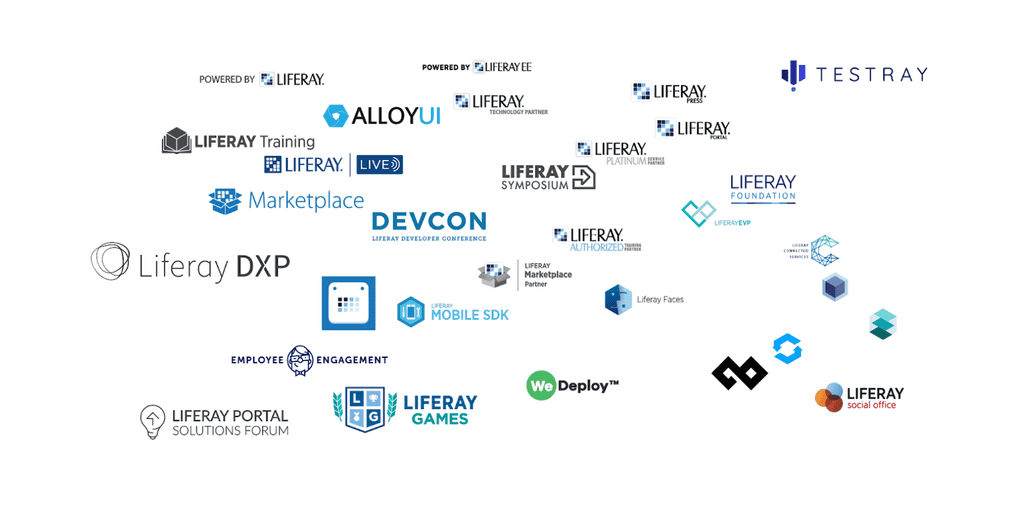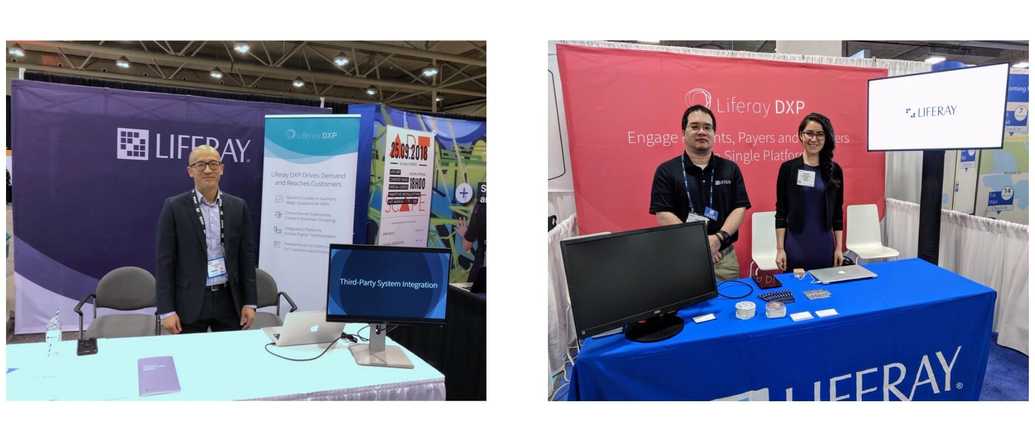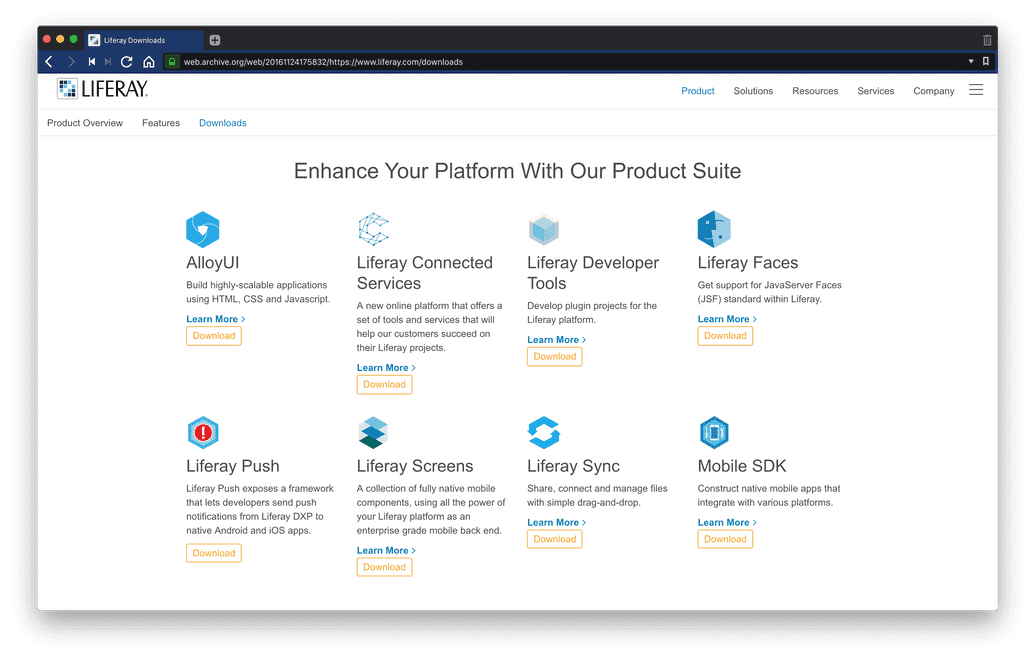What is Liferay DXP? I’m sure you’ve asked yourself this question. I’m even more sure you’ve heard someone else ask this question.
If we as developers, marketers, salespeople, et al are confused about this, how much more confused are our customers and prospects? How can we expect to design, develop and sell this product when so many of us can’t clearly articulate its value?
At a high level, we know that DXP is software that can be used to build and connect intranets, websites, apps and more. But what’s in it? How does it do that? In the past, we’ve tried to answer that by product-izing projects.
For example, we list several mobile products as part of our “Product Suite,” (Exhibit A) such as Liferay Mobile SDK, Liferay Push and Liferay Screens — but are they really separate products?
Mobile SDK is an open source project that anyone can use and contribute to, not a product for sale.
Liferay Push is more of a feature, not a robust product.
Liferay Screens (another open source project) is a library of components.
The value that Liferay delivers for mobile experiences is making it easy to build native or hybrid mobile apps that work with Liferay DXP and other technology. Mobile SDK, Liferay Screens and Liferay Push are all an important part of that, but the full value is realized when you use them together, not as separate products.
So what does this have to do with brand? If a brand is more than a logo, then why do we invest so much energy in icons, logos, names and other artifacts that are generated as a result of each of our internal projects?
 A collection of logos and icons produced over the years to represent various Liferay products and projects.
A collection of logos and icons produced over the years to represent various Liferay products and projects.
These artifacts are the externalization of internal development strategies. We identify an area of the product that can be expanded (native mobile apps), we create a project team to focus on it (Liferay Screens) and when it's ready to announce to the world, we give it a branded name, icon and product page because internally, we think of it as something separate from the rest of the development work in Liferay Portal/DXP.
The fact that the logos are so visually inconsistent is a symptom of the changes in strategy and mindset that occur between different projects; many have significantly different scopes, delivery methods and relation to the overall DXP narrative.
Essentially, it's a large, long game of telephone spread over many years and teams. In the end, the last person to get the message is left very confused.
Now that it’s been two years since DXP’s release, it’s time to communicate a cohesive, understandable brand identity — and not just to each other — but also to our most important audiences: customers, developers and our communities at large.
“make it possible for people to reach their full potential to serve others”
So what does Liferay do? At the core, our mission is to use business as a tool for restoration to help people reach their full potential to serve others. How do we do it? By making technology useful for people.
That sounds great and all, but what does it really mean? What does “making technology useful for people” really look like?
When we first started in the early 2000’s, we sold a portal. Companies were just starting to put processes and assets online at scale. Portals solved a specific need to aggregate a lot of information and systems in order to connect people and share knowledge.
Fast forward 15 years, and Liferay Portal (as well as most other platforms) has broadened to solve many needs, sometimes borrowing features and ideas from other types of software. Many companies have moved from a mindset of “I need to build a good website” to “I need to create a great user experience.” There are a million ways that technology can help them accomplish this goal, but Liferay’s strategy is to offer code that works with as many things as possible and offers flexible, affordable solutions.
We don’t want to force customers to build things a certain way; we want to empower them to do it in the way that works for them and in the way they want to serve their own customers.
This is what we mean when we say “make technology useful for people.”
“Without requirements or design, programming is the art of adding bugs to an empty text file.”
Louis Srygley
Liferay’s core product, DXP, is what people use to build websites, and then to integrate them with other sites, systems or connected devices. That sounds really vague because people can build practically anything with it. Part of the reason we changed the name from “Liferay Portal” to “Liferay DXP” is to better communicate that it is a broad platform that can support a lot of different use cases (“digital experiences”) instead of just portals.
We are also releasing two new products, a commerce offering built on top of DXP that will allow organizations support the purchase and post-purchase part of the customer lifecycle (filling in a crucial gap for our platform), and a brand new customer data and web analytics product called Analytics Cloud.
With these two new releases, it quickly became apparent that what we used to call our “Product Suite” wasn’t really, and after hours of ideological battles, we’ve decided how we’re going to present our burgeoning portfolio.
Once we had clarity on DXP’s value and how it relates to our new products, another problem presented itself. When we first released DXP we included a totally new graphic identity. It was completely separate from the Liferay corporate identity by design, to signal that we were shifting our product’s identity. Liferay Portal was no longer a monolith; it was a flexible, powerful digital experience platform that was designed for anticipating and meeting user needs, no matter the context.
But investing so heavily in unique branding for a product proved to be problematic. Execution was difficult and often the results were fragmented.
 Joe, Jonas and Christine put their bravest faces on at events for Liferay.
Joe, Jonas and Christine put their bravest faces on at events for Liferay.
Now that we were trying to appeal to a broader market with a new business model (subscription-based pricing), we were introducing ourselves as “DXP” and our core brand — Liferay — began to suffer. The brand sins we committed began catching up to us. The brand equity we had was slowly being eroded every time we prioritized DXP branding over Liferay (like with our many DXP-branded event booths, pictured above).
So how do we git reset --merge — and bring the DXP ‘brand’ and the Liferay core brand together? This starts by thinking about who we want to be — and taking a hard look at who we are now. We kicked off this process by conducting a survey as well as qualitative, in-person interviews with a diverse focus group comprised of a wide variety of departments and regions. Then we conducted a brand sprint with the CEO and marketing leadership to gather data for Liferay’s long-term vision. This gave us data and a starting point to continue the evolution of the Liferay brand.
We’ll be sharing more about the results of this in the future, please follow our various channels if you’re interested in learning more about the continued evolution of design at Liferay!
